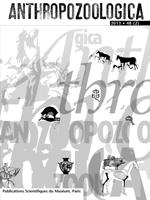Recent archaeological studies reveal the importance of birds in prehistoric North-European hunter-fisher-gatherer burial practices. In this article I describe two examples of bird species at prehistoric hunter-gatherer burials: the Eurasian jay (Garrulus glandarius) at the Middle Neolithic Zvejnieki site in northern Latvia, and the osprey (Pandion haliaetus) at the Late Mesolithic Yuzhniy Oleniy Ostrov site in western Russia. I suggest that the bone finds and their archaeological contexts indicate a prehistoric ideology that can be interpreted as representing totemism and shamanism. The wing bones had a specific function and meaning, probably connected to protection, transformation or transport. The deposition of osprey legs may indicate that the power of this bird was particularly appreciated and re-mobilized in the burial.
How to translate text using browser tools
1 December 2013
Powerful birds. The Eurasian jay (Garrulus glandarius) and the osprey (Pandion haliaetus) in hunter-gatherer burials at Zvejnieki, northern Latvia and Yuzhniy Oleniy Ostrov, northwestern Russia
Kristiina Mannermaa
ACCESS THE FULL ARTICLE
It is not available for individual sale.
This article is only available to subscribers.
It is not available for individual sale.
It is not available for individual sale.

Anthropozoologica
Vol. 48 • No. 2
December 2013
Vol. 48 • No. 2
December 2013
bird bones
burial practices
hunter-gatherers
Oleniy Ostrov
ossements d'oiseaux
pratiques funéraires
Préhistoire




